Quick Links
Building a gaming PC used to be a much tougher job that involved picking parts from various retailers, getting a tech-savvy friend to help, and diagnosing issues with one's build in case they mixed up the instructions. It is now much easier to build a DIY PC as PC part manufacturers make it easier to install hardware. Precise instructions and a plethora of online information (often in video format) assist first-time and intermediate-level PC builders attempting to do so on their own.
Part of what appeals to a lot of users when it comes to building a PC is the amount of customizability that is available so that they can build a PC that is specific to their needs and the games they play. While some users prefer prebuilt PCs simply because of how easy they are to set up and use, others prefer the fine-grained control they get in their preferred PC. Custom-built PCs often have higher-end internal components that get overlooked by system builders, such as faster SSDs, better memory, and performance coolers.
While gaming PCs are something that many gamers know as well as the back of their hands, others might be a bit uneasy trying to put parts together to avoid making a mistake or overcomplicating their PC build. This is in particular a concern when selecting components that represent excellent value and price-performance ratios that clock in at around $1,000.
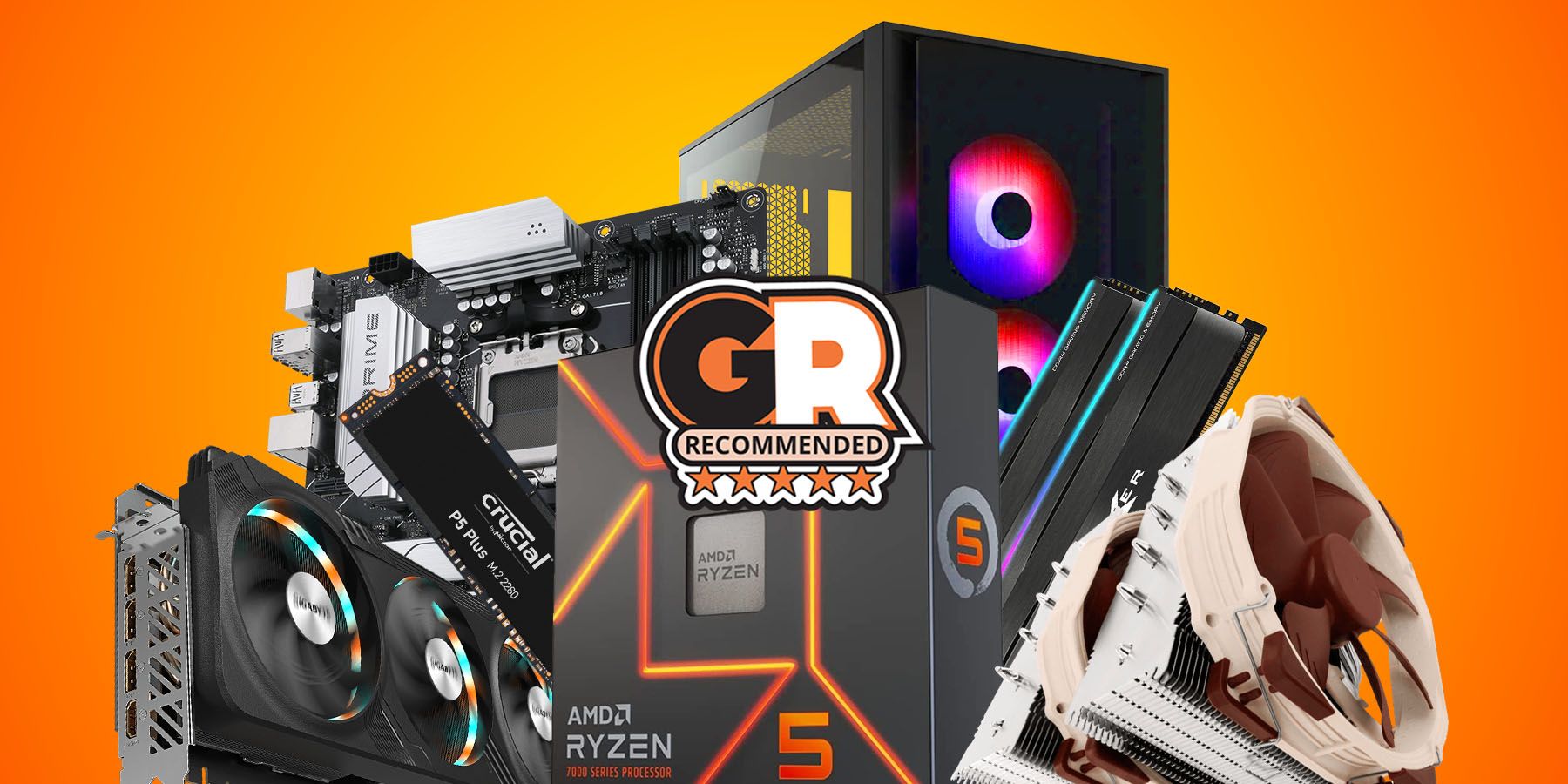
The Best Gaming PC Builds Under $2000
Need to build a PC on a budget? Here are the best builds you can make yourself for under $2000!
What Gaming PC Build Should I Get?
We have divided our build guides into multiple tiers to allow users to choose the best build possible, while also catering to different budget and performance classes:
- The Entry Level $500 Gaming PC Builds that target Full HD Gaming
- The Mid-Range $1000 Gaming PC Builds that can handle Full HD and 2K Gaming along with Entry-level VR Support
- The High-end $2000 Gaming PC Builds that aim to deliver stellar 2K Ray Traced Performance along with mid-range VR Support
- The Enthusiast-Grade $3000 Gaming PC Builds that can handle 4K Gaming with Ray Tracing (with DLSS/FSR at times)
How To Build A Balanced Gaming PC For $1000
Building a balanced gaming PC can be a challenge for even the most seasoned of PC builders. This is because dealing with any sort of budget when building a PC that can have as many as seven or more key components nearly always means compromising one way or another. This is particularly true for builds that are considerably more restricted in terms of pricing at certain price points (such as $1000). However, prospective PC builders can consider some of the key factors that make a gaming PC balanced and functional:
Needs-Based Choices: At $1000, prospective gamers and system builders have a fair amount of budget to play with to ensure they end up with a balanced gaming PC, but what is required by the gamer and the titles they play is key to determining what specific components will be purchased. For example, some titles benefit from faster CPUs while others find themselves bottlenecked by GPUs. Making tradeoffs that favor the games one intends to play means building around their needs as a gamer instead of going with more generic builds.
Target Resolutions: Gamers may have different performance demands. CPU/GPU needs vary based on the titles and their target resolutions. Higher resolutions require considerably beefier GPUs and memory as opposed to more balanced PC builds, which would see more spending on ancillary PC parts such as a PSU/Case/Cooler.
A Quality PSU: Power supplies (PSUs) are often the most easily overlooked aspect of any PC build. They are, however, some of the most important given that they ensure stability, performance, and future upgrade potential for a gaming PC.
Aesthetics: While it is tempting to get the latest and greatest when it comes to RGB lighting and premium AIOs and cases, one must consider the performance implications of reallocating a significant amount of a user's budget towards how a PC looks rather than how it performs, especially when working with a limited $1000 budget.
Estimated build costs are based on the cheapest price available on Newegg and Amazon at the time these builds were made. Prices are subject to change by these vendors. Game ZXC will strive to keep the builds up to date as better alternatives appear on the market or prices change significantly.
First Build: Well-Rounded Value-Added Performance
-
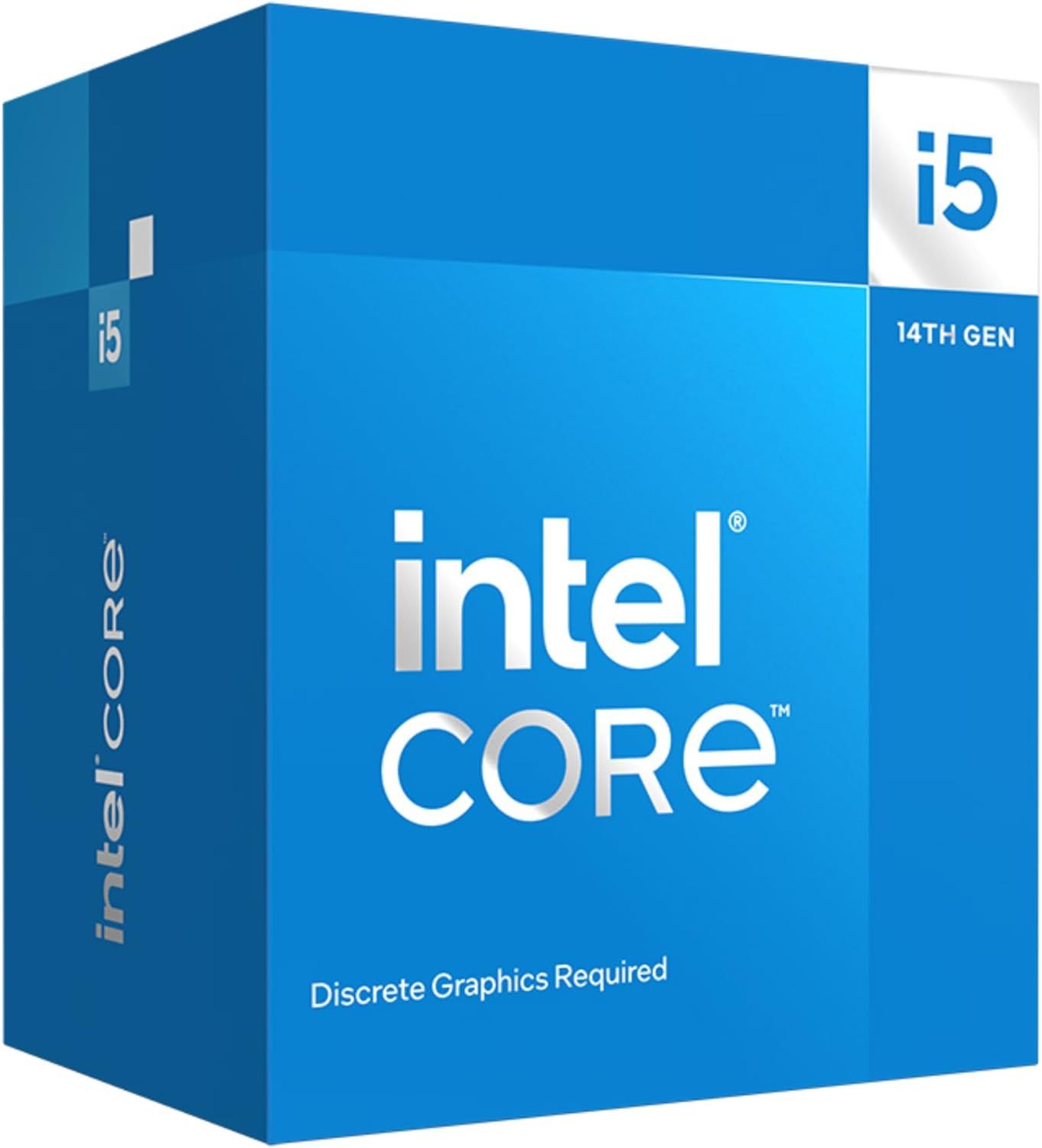
Intel Core i5-14400F
$210 $215 Save $5Intel Core i5-14400F is a revised edition of the i5 13400F that brings higher clock speeds for the same price. The Raptor Lake Refresh architecture helps it improve in overall performance while retaining its power efficiency. The i5 14400F brings 6 performance and 4 efficient cores, resulting in a total of 16 threads.
-
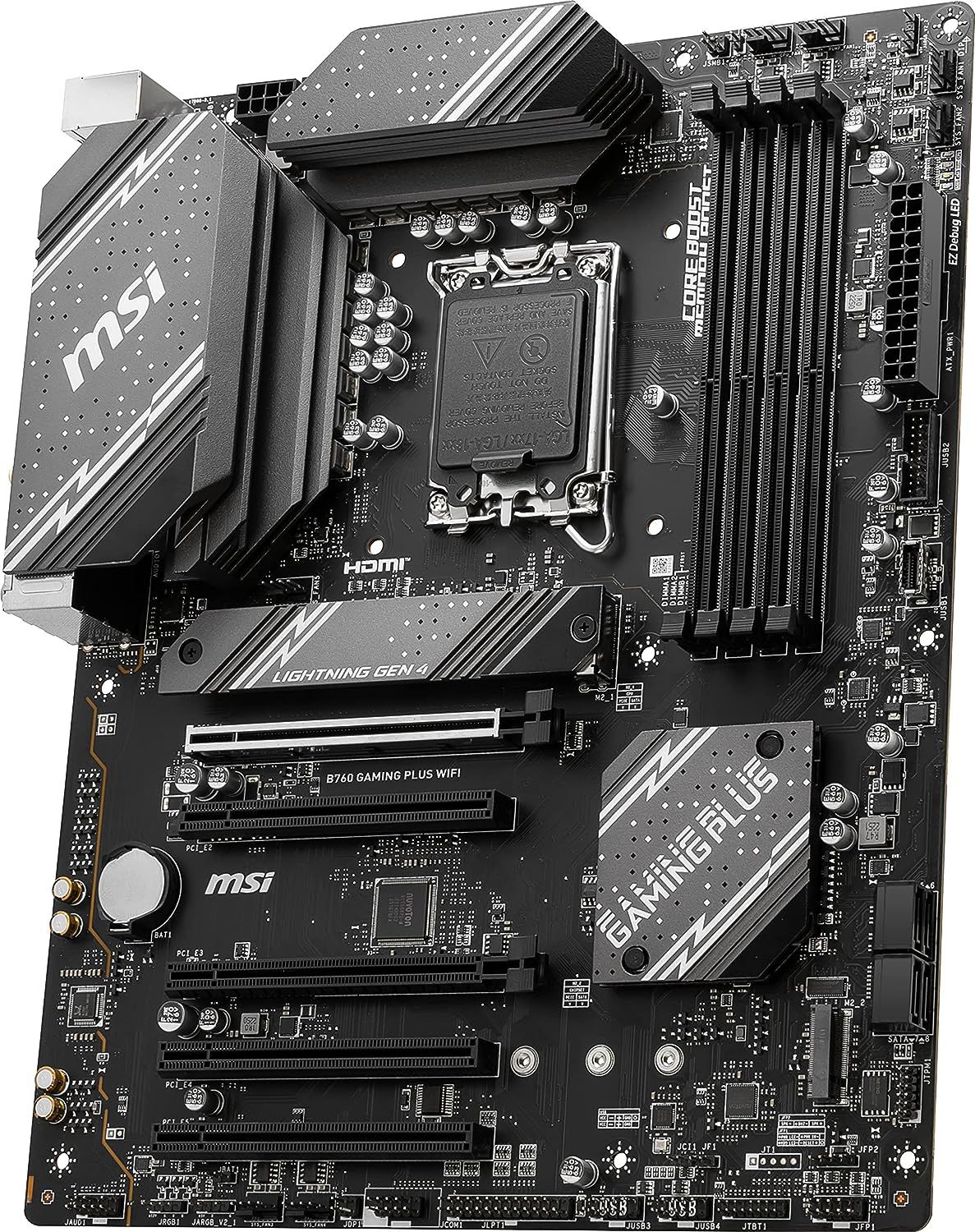
MSI B760 Gaming Plus WiFi
MSI B760 Gaming Plus WiFi holds several PCI-E slots for adding various kinds of expansion cards at the same time. Its support for highly clocked memories, Intel's 12th/13th/14th gen CPUs, and fast storage is commendable. At an affordable price, it is one of the few motherboards that come with EZ Debug LEDS for easy troubleshooting.
-
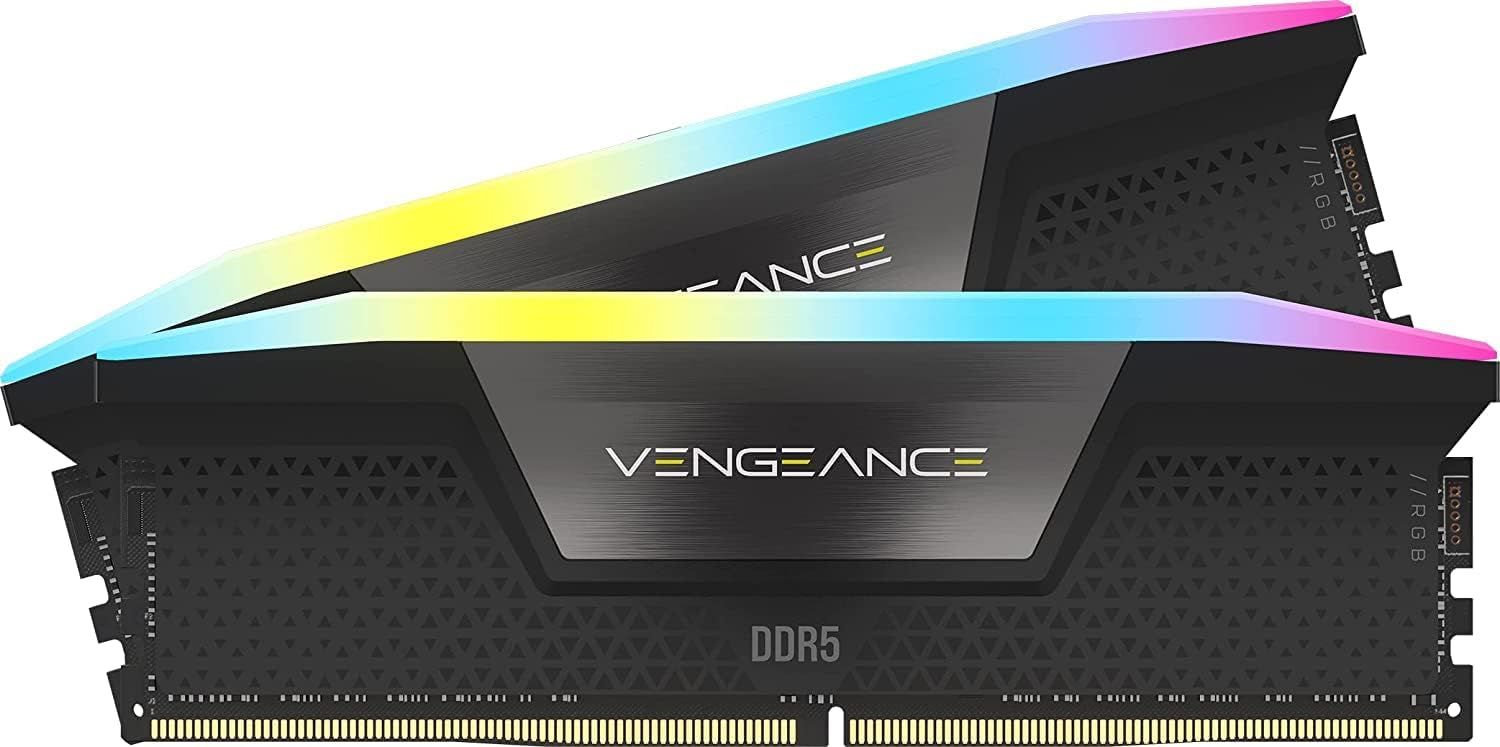
CORSAIR VENGEANCE RGB DDR5 6400MHz 32GB
$110 $115 Save $5Corsair's Vengeance RGB DDR5 RAM kit features dual RAM modules, each having 16GB memory capacity. It has built-in XMP 3.0 profiles, offering a blend of a high-rated frequency, low latency, and a reasonable price tag in tow.
For aesthetics, the RAM sticks look gorgeous as a result of the RGB LEDs on top of its dedicated aluminum heat spreaders. -
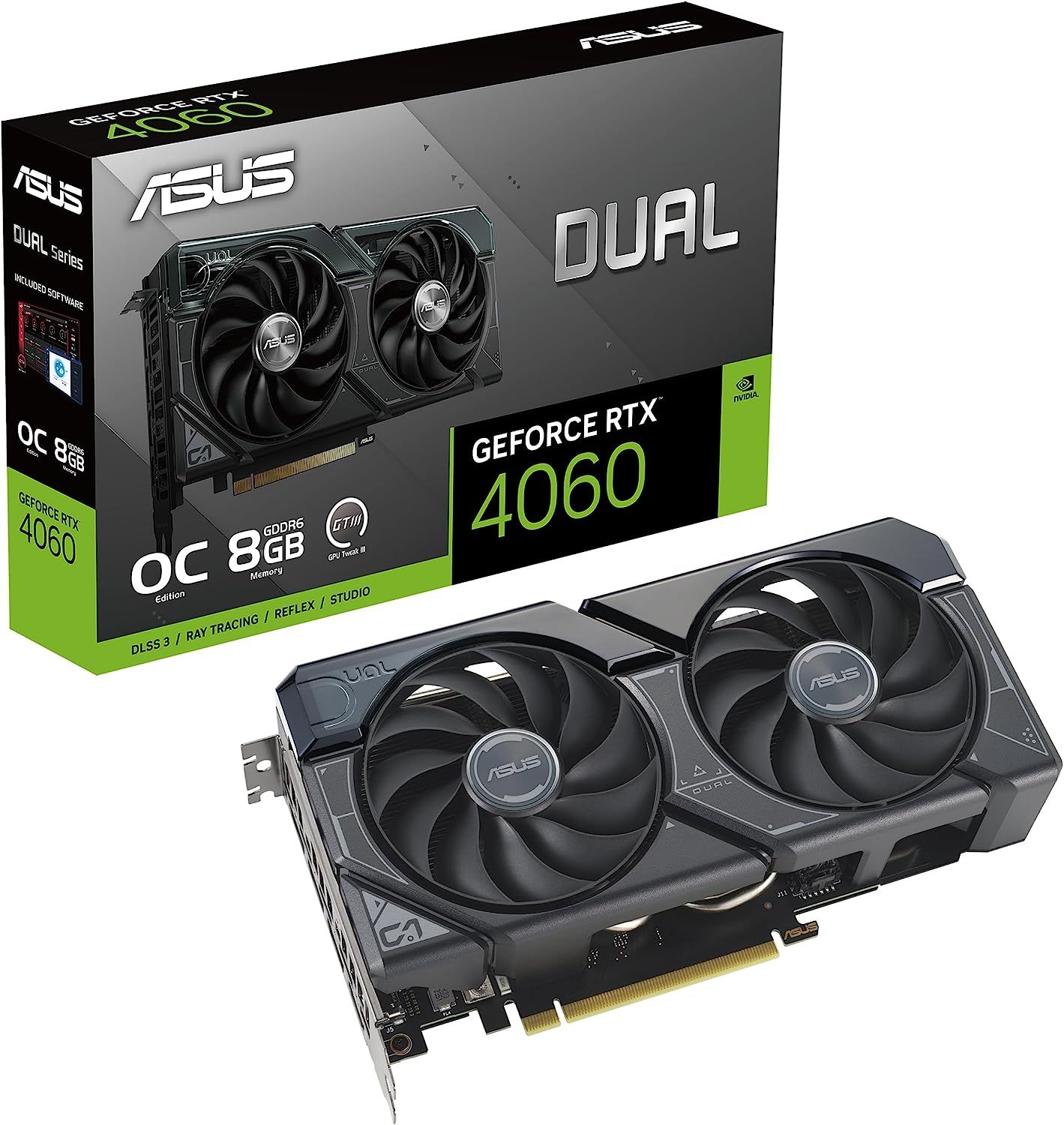
ASUS Dual GeForce RTX™ 4060 OC Edition 8GB
The ASUS Dual RTX 4060 GPU offers a higher boost clock than many of its peers while offering a compact, 2.5-slot GPU that can easily fit in most cases. Powered by a single 8-pin connector with a thermal design power (TDP) of 115W, it offers more efficiency than its predecessor but has no RGB lighting whatsoever in a bid to match Nvidia's MSRP for the Founder's Edition.
-
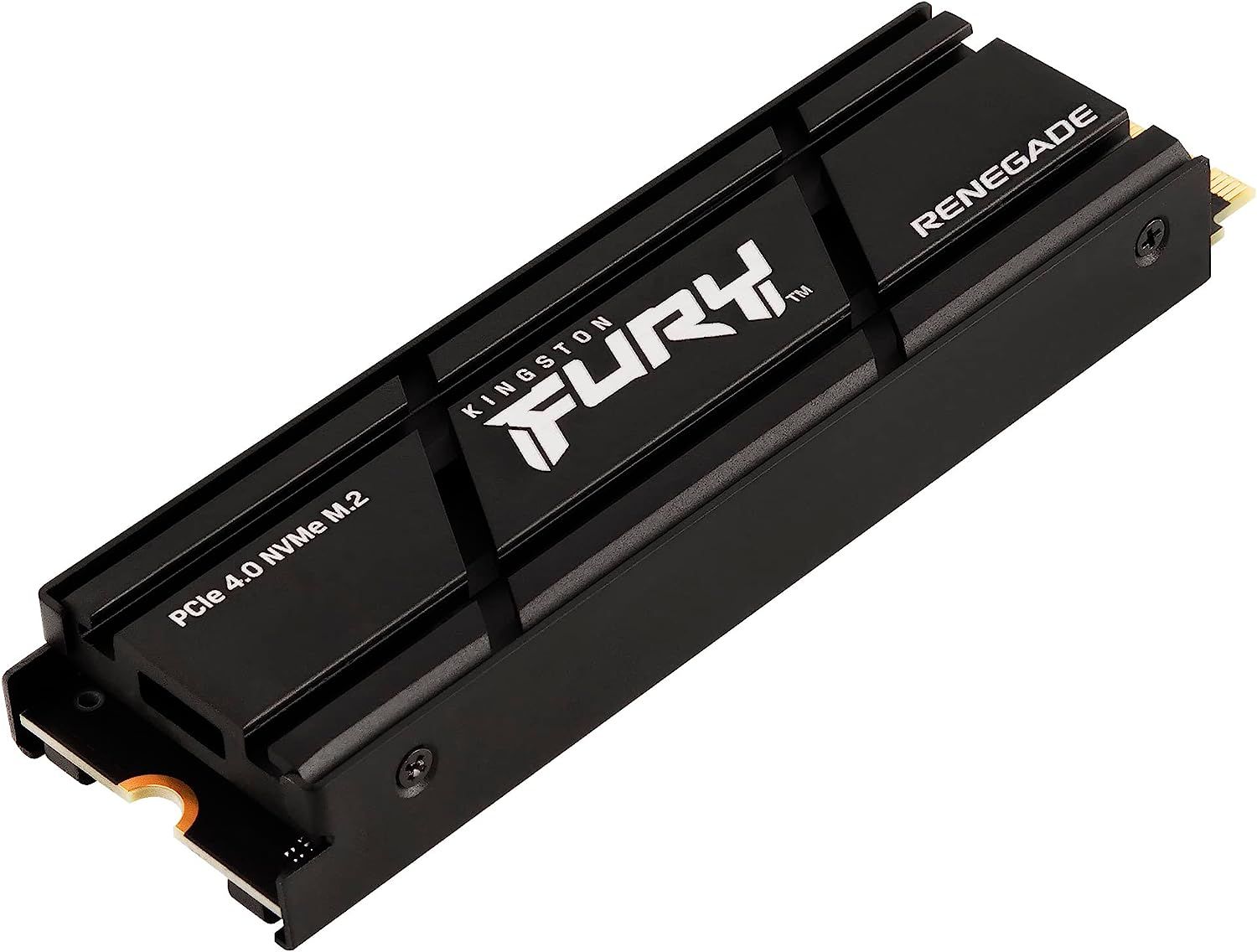
Kingston Fury Renegade 500GB PCIe Gen 4.0 NVMe M.2 Internal Gaming SSD
This Kingston Fury Renegade is an M.2 2280 internal SSD with a 500 GB storage capacity. The storage device is specifically geared for gaming purposes, and it even supports the PlayStation 5 console and its high-speed requirements. The SSD uses PCIe 4.0 interface for fast transfers, and it can be installed in both laptops and desktops.
-
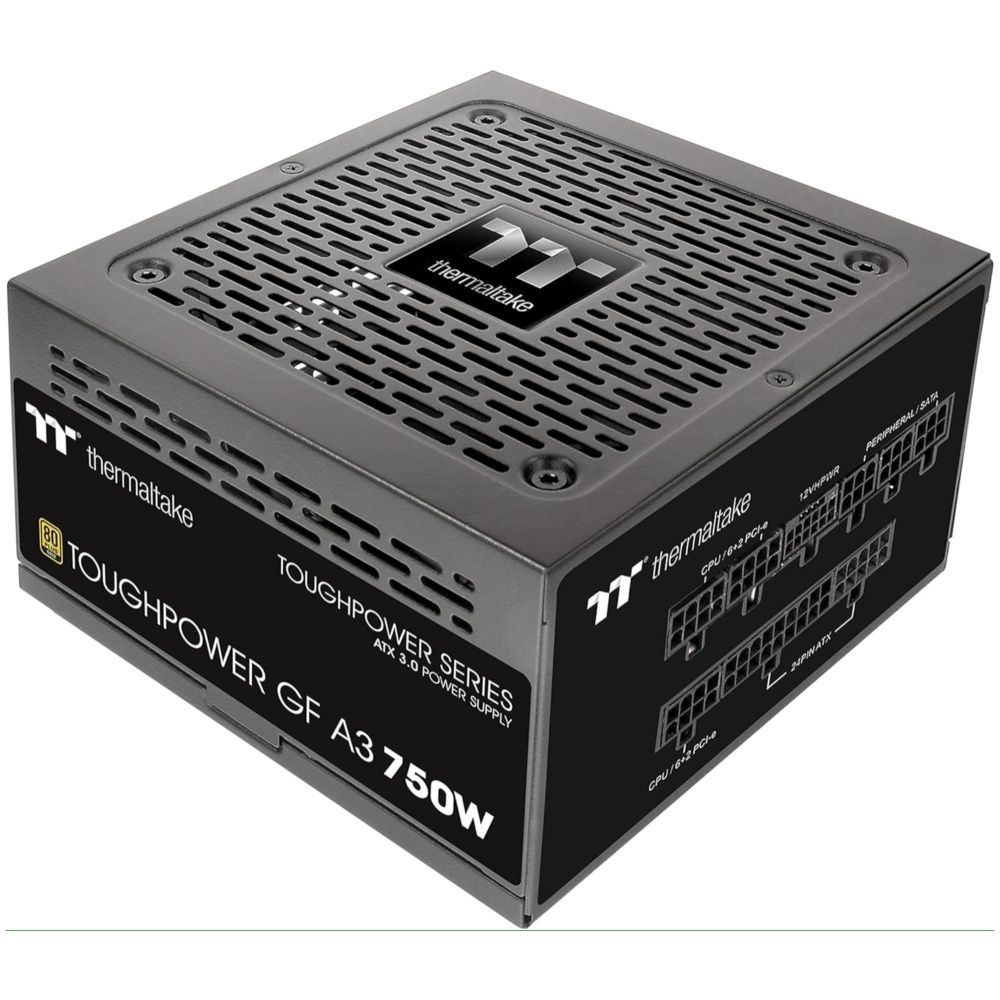
Thermaltake Toughpower GF A3 750W
$90 $100 Save $10The Thermaltake Toughpower GF A3 750W power supply is a fully modular offering in the long-running Toughpower series. It is an 80-Plus Gold-rated PSU with peak power of 750W, which is sufficient even for most high-end PCs. It features a PCIe Gen 5.0 connector to power GPUs with the new 12VHPWR cable. It also follows the ATX 3.0 standard for better power excursion and low-load efficiency. The 120mm fan has a Smart Zero Fan mode for silent operation.
-
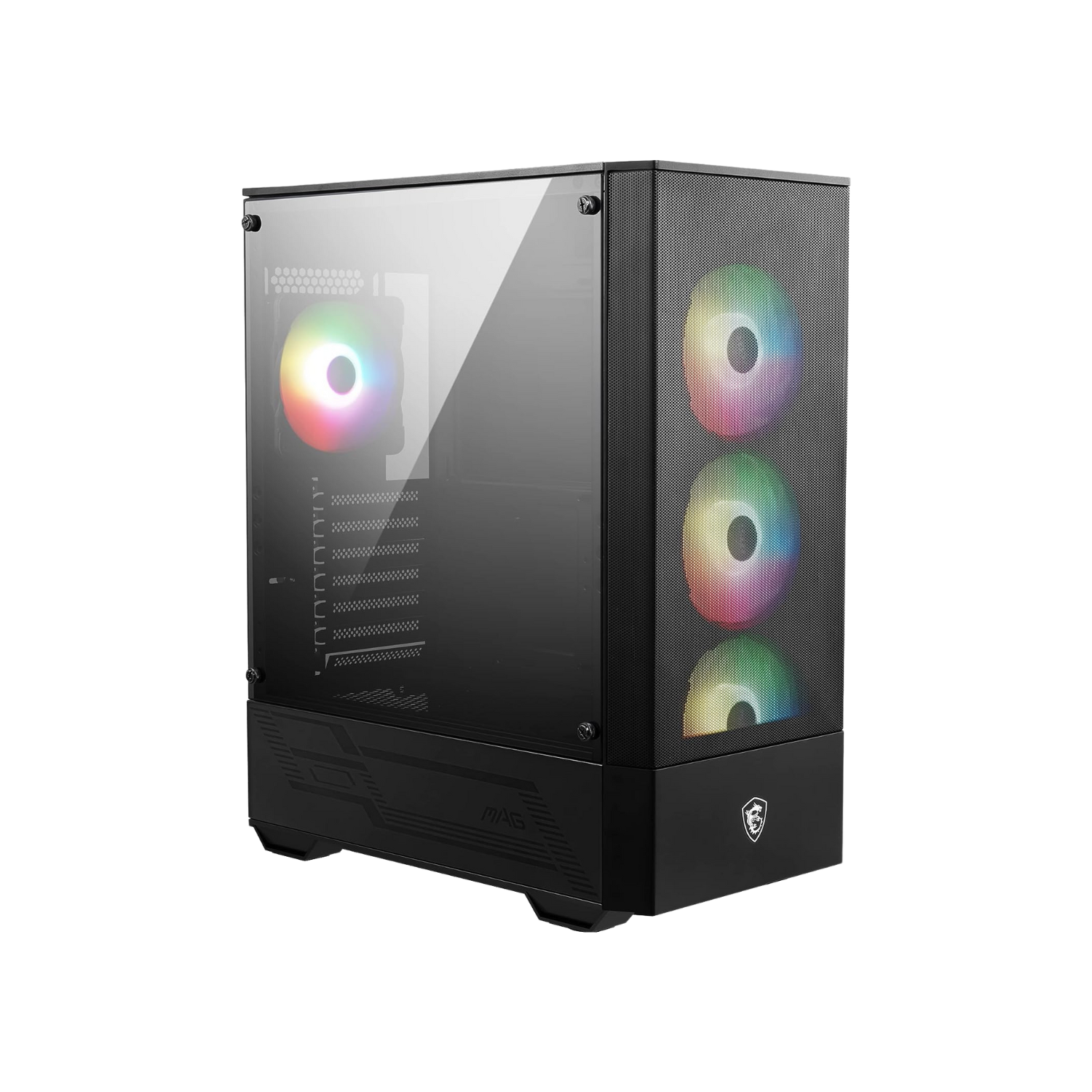
MSI MAG Forge 112R Case
The MSI MAG Forge 112R is an excellent affordable case for both gamers and content creators. Featuring 4 ARGB fans and an included controller box, the case lights up with some spectacular preset effects. A 4 mm tempered glass panel showcases the best components and is easily removed without tools. The case accommodates liquid cooling radiators and promotes efficient cooling through its mesh front panel.
The build above combines Intel's deca-core CPU offerings with Nvidia's cheapest RTX 4000 series GPUs to keep things humming at the $1000 market that it targets. To do this, it picks Intel's latest mid-range Core i5 14400F CPU, which skips an iGPU, but does deliver on multiple fronts, including higher clocks than its predecessor, a bundled thermal solution as part of the package, and plenty of cores that handle as many as 16 threads simultaneously. The Intel Core i5 14400F also works with existing 12th and 13th-generation Intel-based motherboards.
This includes the MSI B760 Gaming Plus Wi-Fi Motherboard, which offers decent memory overclocking potential, plenty of expansion potential, and support for Wi-Fi 6E built in. This, when coupled with 500GB of fast PCI-E 4.0 SSD storage from Kingston, a factory-overclocked RTX 4060 from ASUS, and 32GB of high-clocked, low-latency memory from Corsair, makes for an exceptional value-centric bundle for gamers.
To top it all off, the MSI MAG Forge 112R case and gold-rated Thermaltake Toughpower 750W Gold-rated PSU bring up the rear, representing both value and upgradeability that most of this PC's peers lack in 2024.
To decide if it fits a user's needs, Game ZXC has a dedicated review for the MSI MAG Forge 112R available. If not, they can always interchange it with another PC case that better suits their needs while accommodating the current PC build.
Total Estimated Build Cost: $1,020
Second Build: Best AMD-Centric Gaming Build
-
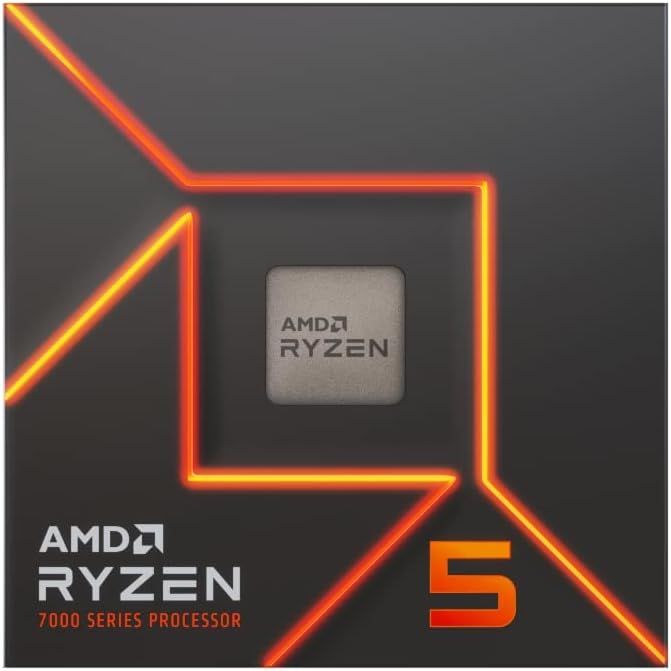
AMD Ryzen 5 7600
$189 $230 Save $41The Ryzen 5 7600 is the entry-level, yet very capable, gaming CPU from AMD that features 6 cores, 12 threads, and 32MB of L3 cache. It has a base clock speed of 3.8GHz and a boost clock speed of 5.1GHz. The Ryzen 5 7600 is an unlocked processor with a default TDP of 65W. It also has integrated RDNA 2 graphics and is the cheapest offering in the lineup with an iGPU.
-
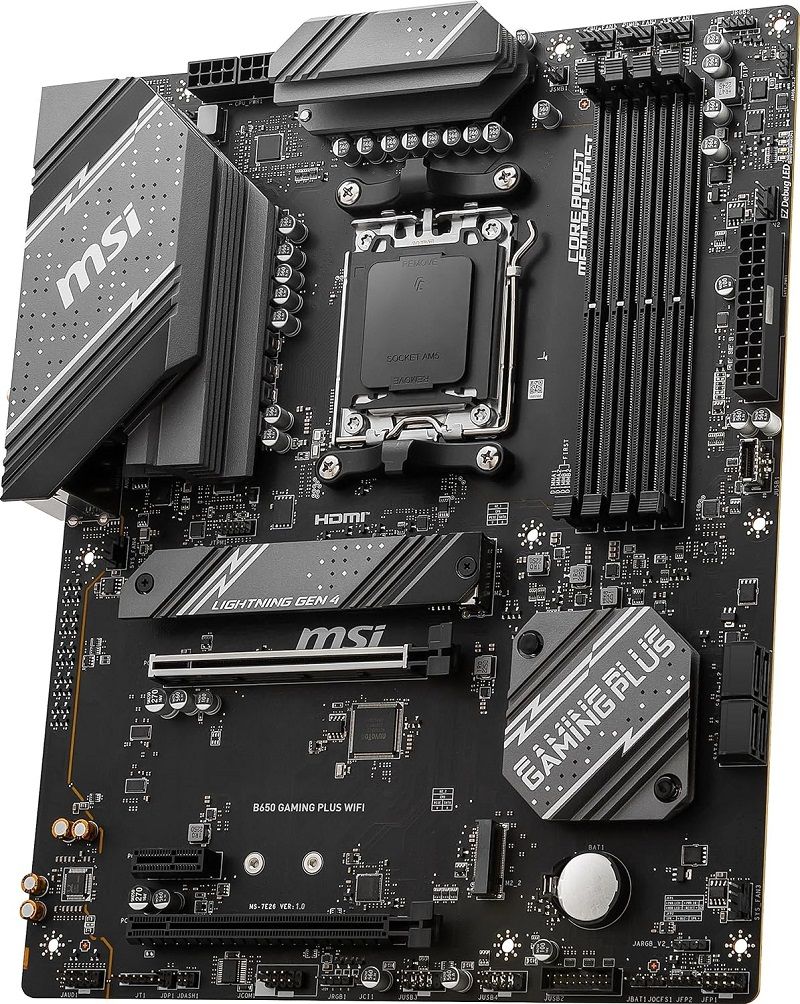
MSI B650 Gaming Plus WiFi
MSI B650 Gaming Plus is an excellent choice for AMD CPU users who are looking to get the job done without spending over $200. The 15-power phase VRM will be adequate for mid-range CPUs, while the multiple PCI-E slots will allow users to add various expansion cards. There are plenty of connectivity options too, including several fan headers, a built-in WiFi adapter, fast USB headers, and even troubleshooting options.
-
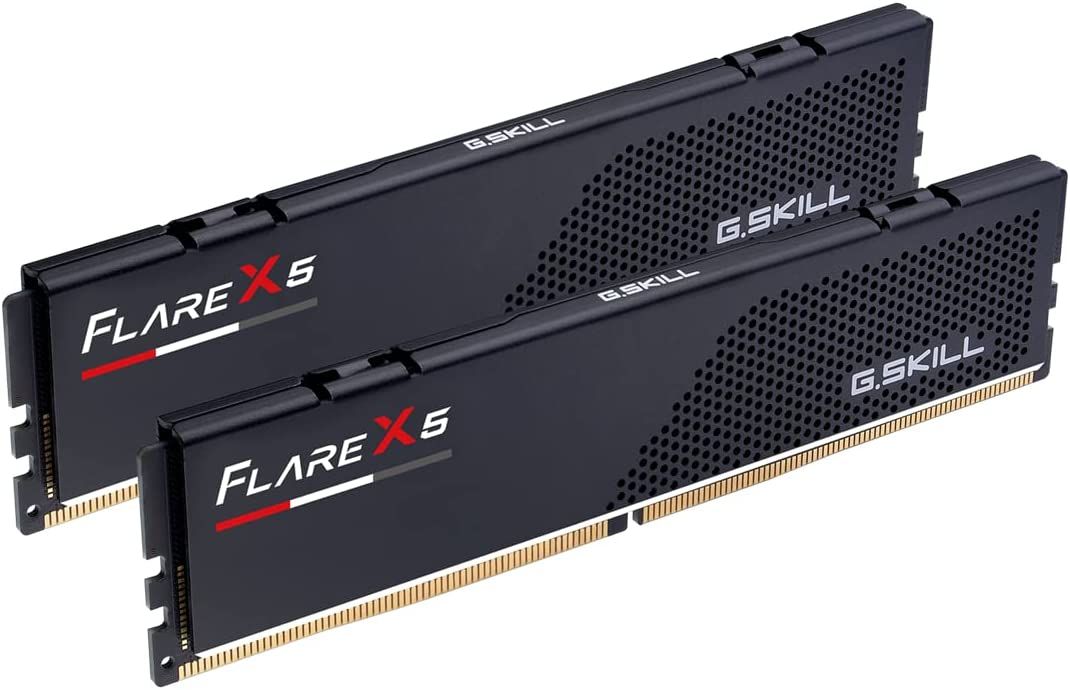
G.Skill Flare X5 Series (AMD Expo) 6000MHz 32GB (CL36)
The G.Skill Flare X5 Series RAM kits are DDR5 RAMs that operate at an overclocked 6000MHz sweet spot for AMD AM5 processors with a lower latency EXPO profile available to allow users to overclock their memory with a push of a button while costing significantly lower than the competition.
-

Kingston NV2 1TB M.2 2280 NVMe Internal SSD
$61 $75 Save $14This internal solid-state drive from Kingston has 1 TB of digital storage capacity. The NV2 series SSD is designed to be compatible with laptops. It operates on PCIe 4.0 Gen 4x4 technology, features an M.2 2280 form factor, and delivers read speeds of up to 3,500 MB/s. It has lower power requirements, generating minimal heat, which makes it perfect for compact devices.
-
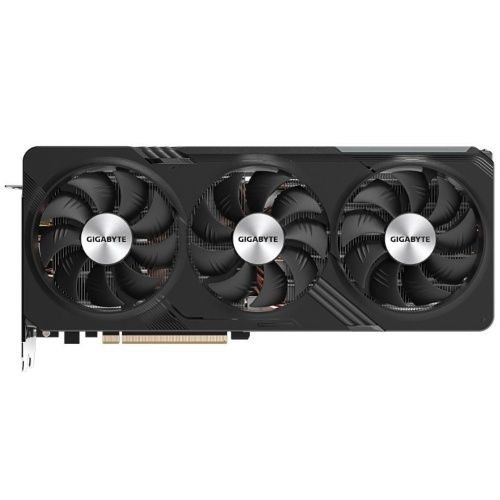
GIGABYTE Radeon RX 7700 XT GAMING OC 12G
The GIGABYTE Radeon RX 7700 XT GAMING OC 12G graphics card is a mid-tier offering in the Radeon 7000 series. Based on the Navi 32 platform, the graphics card comes with a boost clock speed of up to 2599 MHz and a game clock speed of up to 2276 MHz. The GIGABYTE Radeon RX 7700 XT GAMING OC 12G comes with a triple-fan cooler design, two 8-pin connectors, two DisplayPort 2.1, and two HDMI 2.1 ports.
-
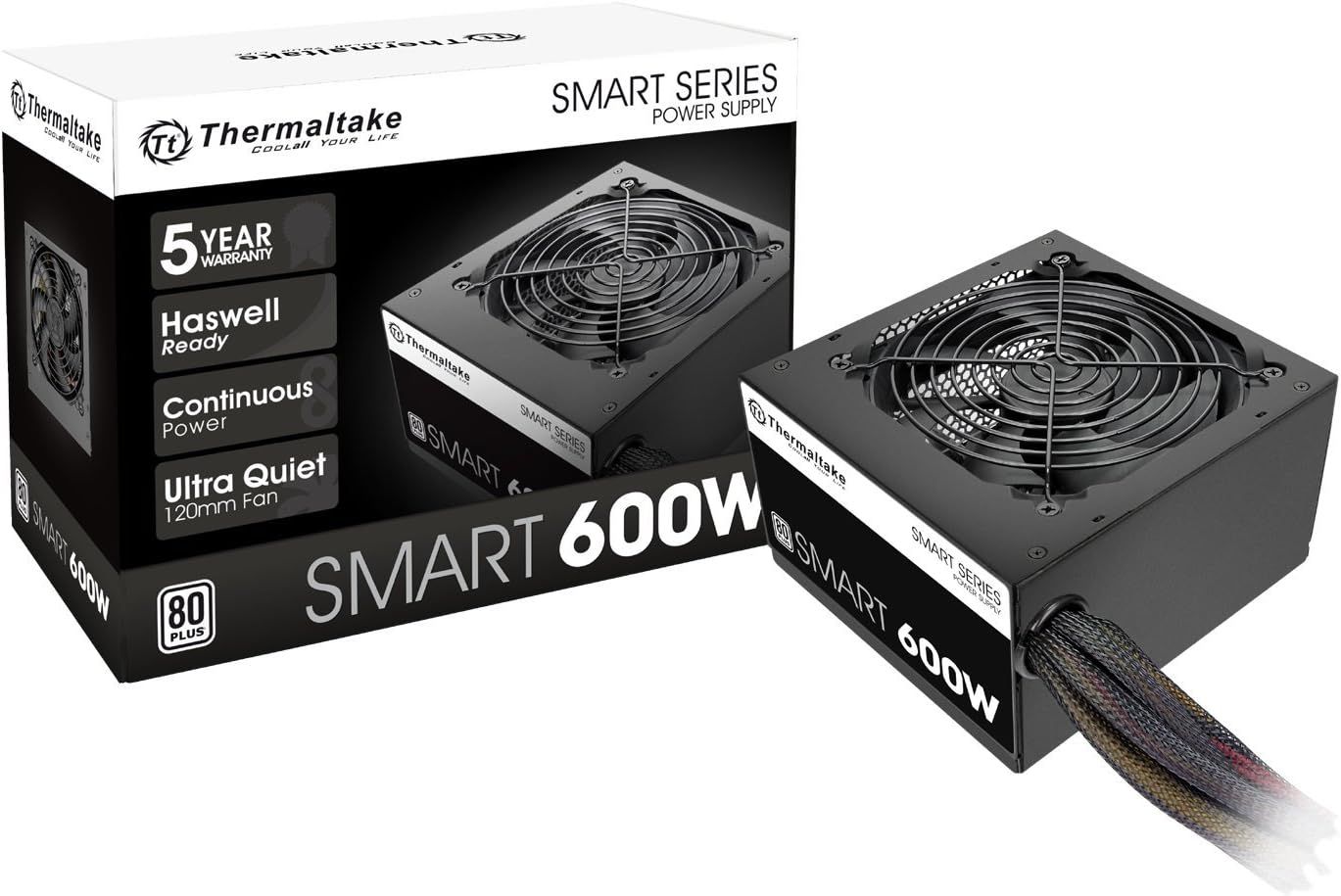
Thermaltake SMART 600W ATX PSU
The Thermaltake SMART 600W ATX is a power supply unit that is designed to provide reliable and efficient power for your computer. This unit delivers 600 watts of continuous output. It complies with both Intel ATX 12V 2.31 and EPS 12V 2.92 standards, ensuring compatibility with many PC builds.
The SMART 600W ATX has received an 80 PLUS certification, indicating 80% efficiency under a typical load. This power supply supports two PCI-E 6 plus 2-pin connectors. -
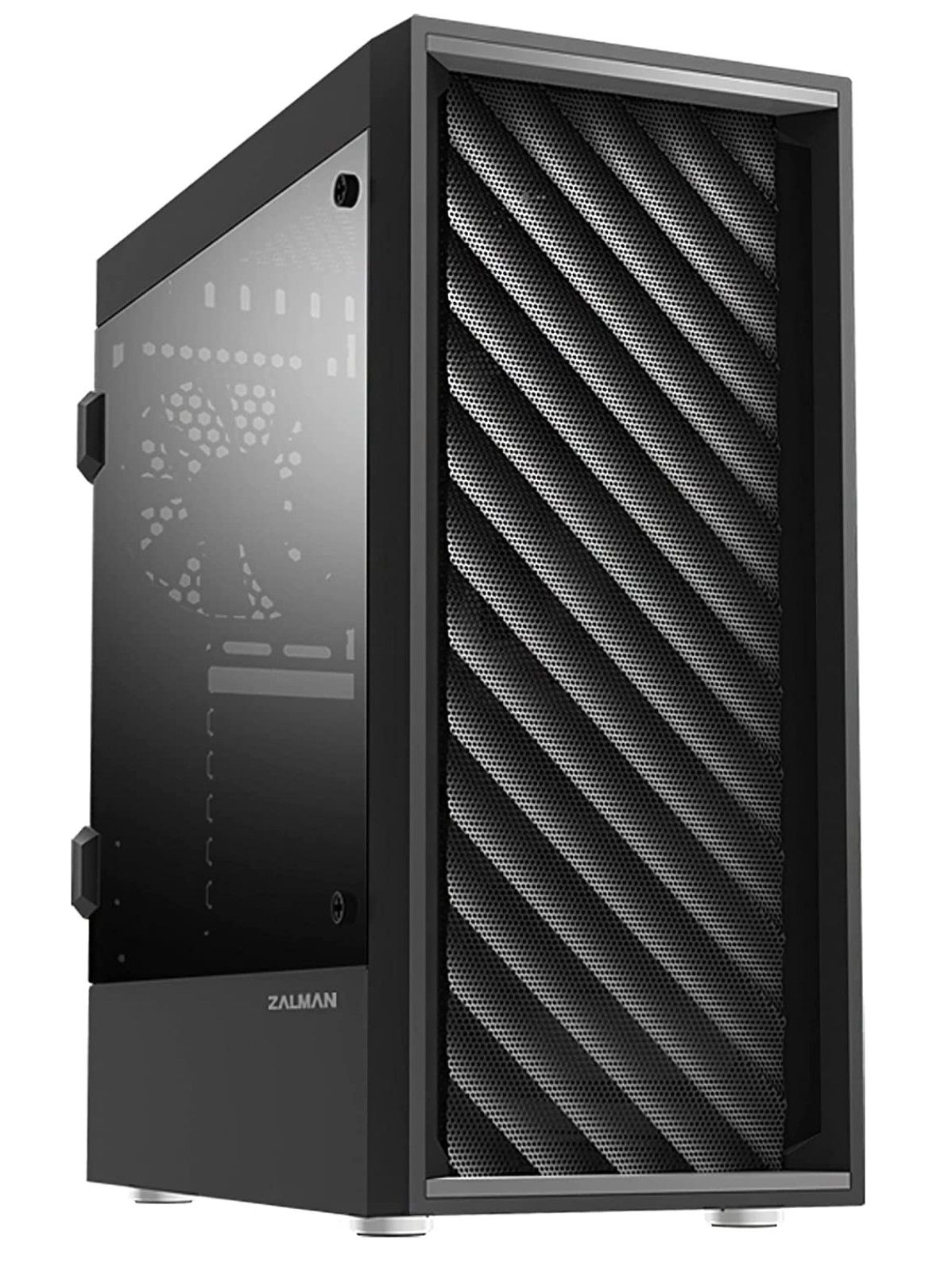
Zalman T7 ATX Mid Tower PC Case
The Zalman T7 ATX Mid-Tower PC Case features a front mesh panel for maximum airflow and a transparent side viewing window. The case includes 2 pre-installed 120 mm fans and accommodates ATX, Micro-ATX and Mini-ITX motherboards.
This second build leverages the excellent gaming prowess of the powerful, unlocked hexacore AMD Ryzen 5 7600, bundling it with a capable entry-level MSI B650 Gaming Plus Wi-Fi motherboard as well as 32GB of G.Skill's Flare X5 offering 6000MHz DDR5 memory with an EXPO profile with decent timings (CL36) on offer. This offers end-users a future-proof AM5 motherboard and memory in addition to a capable gaming CPU with AMD's newer Zen 4 cores. This allows it to deliver better performance while requiring less thermal headroom versus the older Ryzen 5000 series processors thanks to them using a newer, more efficient design and fabrication process (5nm vs 7nm).
For the GPU, the newer (and more powerful) RX 7700XT delivers excellent performance, plenty of VRAM, and arguably the best value-for money a user can get in 2024 with a sub-$400 budget in play for what is unreservedly the most important part of a gaming PC.
For this build, a decent entry-level 600W Thermaltake Smart PSU gets the job done given the PC's requirements, but could be a limiting factor for gamers looking to move to higher end CPUs and GPUs down the line. Users can double their somewhat conservative PSU budget by considering much better gold-rated option that offers much more upgrade headroom from Thermaltake if regular upgrades are in play for the build in question.
With one of the best gaming CPUs in the business, plenty of power capacity under the hood, and excellent memory, there isn't much to improve given budget constraints when targeting a sub-$1000 PC build without going considerably overboard. The build utilizes the Zalman T7 ATX case, which arguably is one of the best value-centric cases within its price range, and a mid-range Kingston NV2 SSD offering 1TB of space for gamers looking to handle their storage capacity needs meaningfully in the coming days.
Total Estimated Build Cost: $1,027

Nvidia vs. AMD: Which Graphics Cards are better?
Team Red vs Team Green face off in a comparison that examines their raw power, efficiency, software & driver support, and value for money
Third Build: Crosshairs Centered On The GPU
-
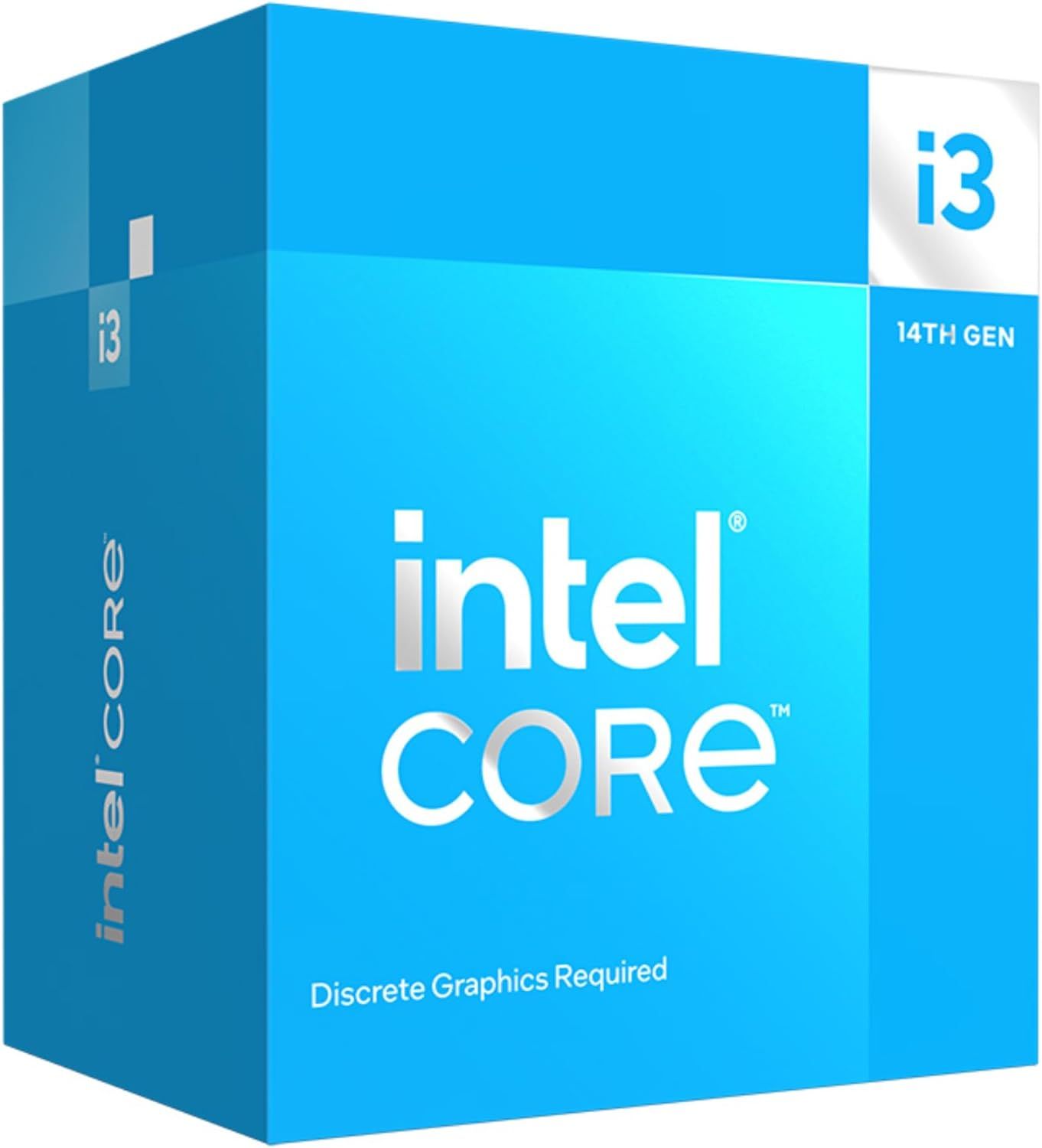
Intel Core i3-14100F
Intel Core i3-14100F is a refreshed version of the i3 13100F, now with higher clock speeds that go to as much as 4.7 GHz. Based on Intel's older Alder Lake architecture rebadged as a Raptor Lake Refresh offering, the CPU brings 4 performance cores and a total of 8 threads to get started with any small or medium-scale application. With its capable single-core performance, it holds its own versus most entry-level processors in gaming and productivity alike.
-
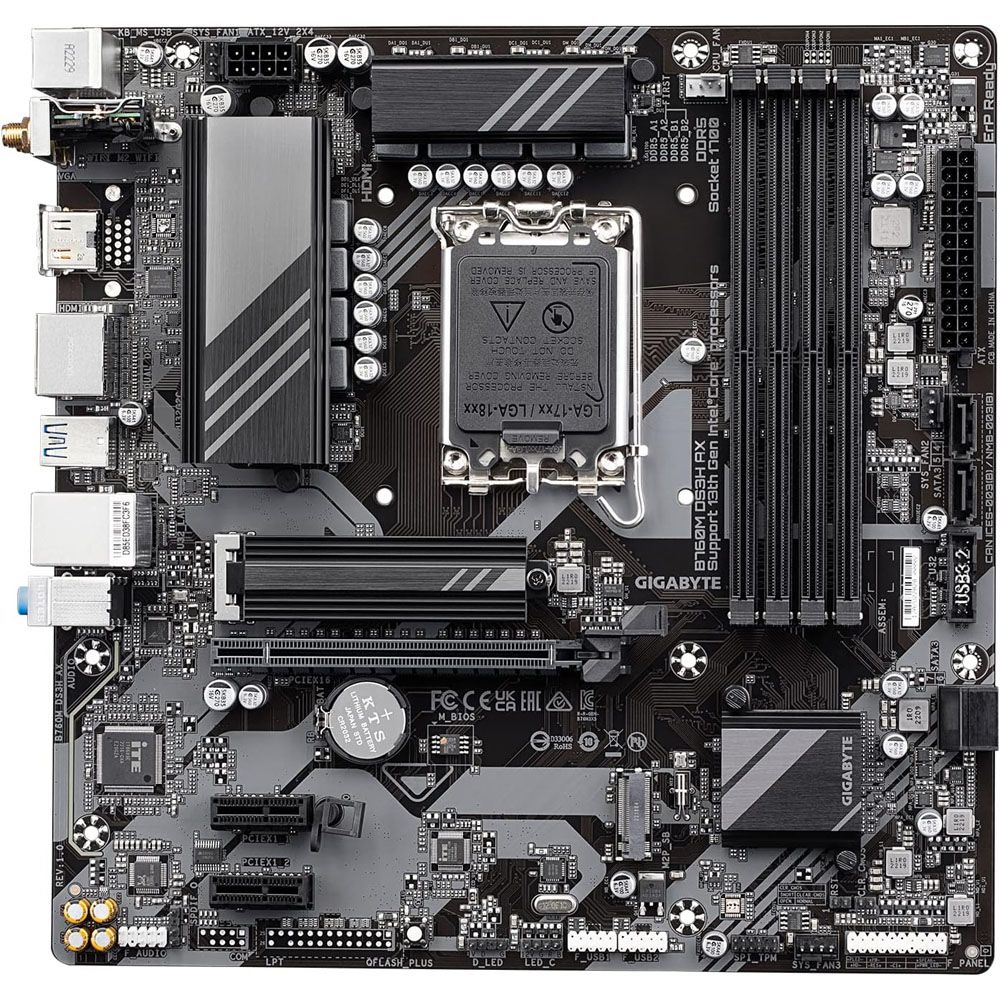
Gigabyte B760M DS3H AX
$140 $150 Save $10The B760M DS3H AX is adequate for budget-centric who are looking for a feature-packed board for their Intel CPUs. Without compromising on functionality, the board offers multiple ports and slots for expansion while providing an appealing look with minimal accents on the PCB and heatsinks. Moreover, the built-in WiFi allows users to access wireless networks without investing in an adapter.
-
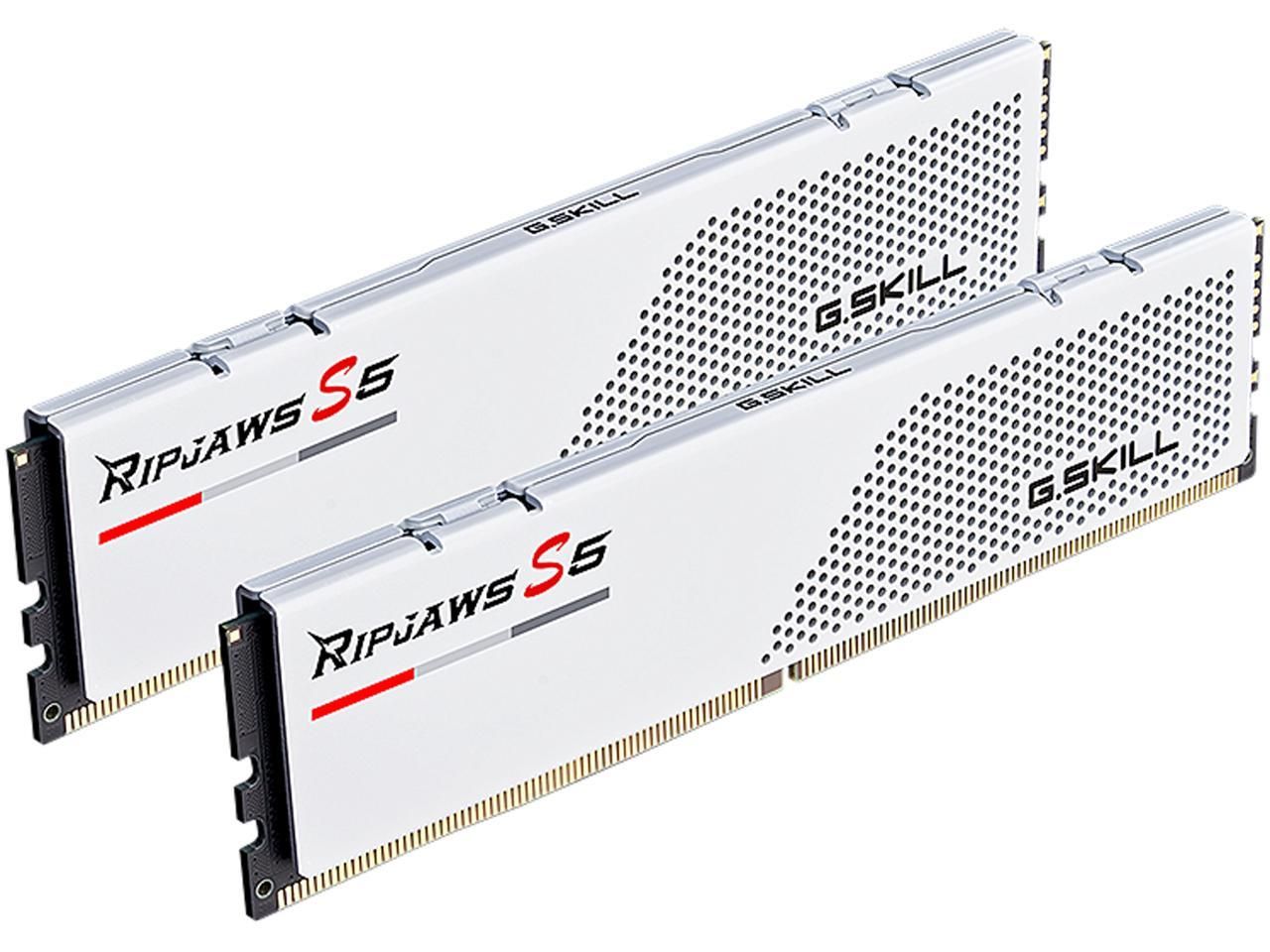
G.SKILL Ripjaws S5 Series
G.SKILL Ripjaws S5 Series is a budget-friendly DDR5 RAM kit clocked at 5600 MT/s and gets every job done with no issues.
The memory kit has low latency and CL28 timings that are tight for fast operation and is ideal for budget gaming builds. The RAM modules bring appealing white aluminum heat spreaders that stand out inside the rig. -
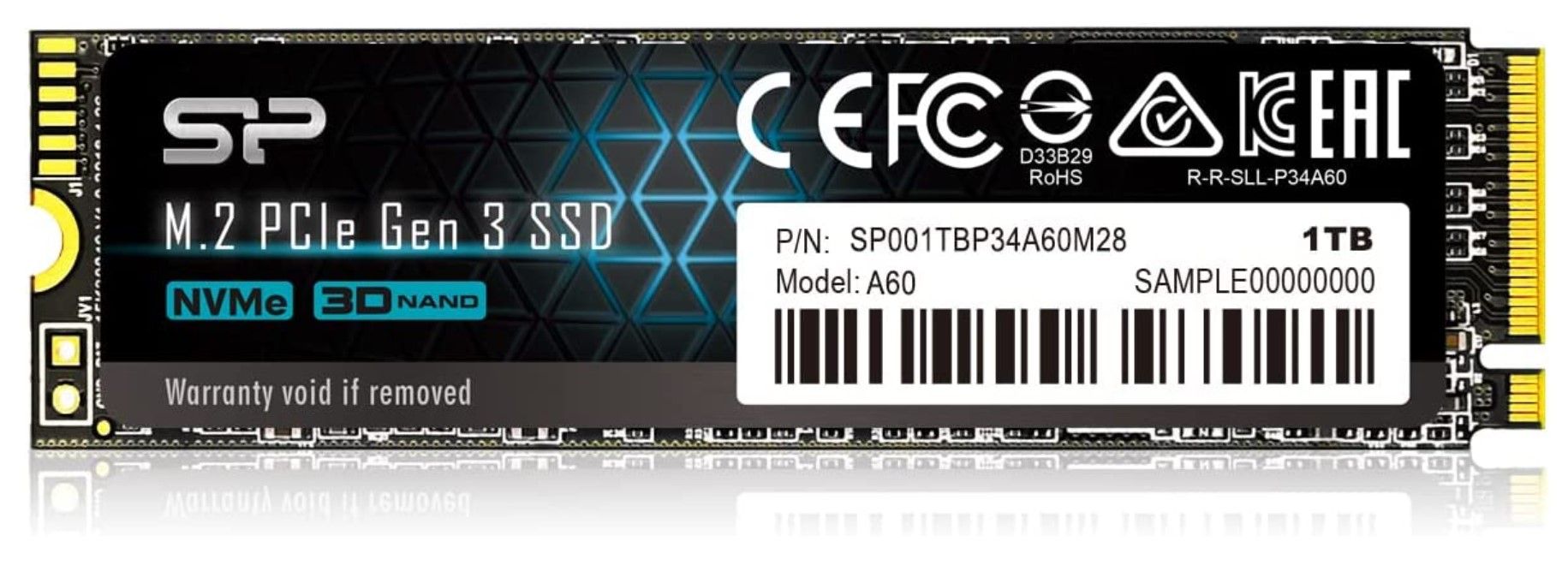
Silicon Power 1TB NVMe M.2 PCIe 2280 SSD
The Silicon Power 1TB NVMe M2 2280 SSD uses the PCIe Gen 3x4 interface with class-leading read and write speeds. Utilizing the NVMe 1.3 + HMB protocols, the Silicon Power 1TB NVMe M2 offers scalable bandwidth and low latency performance.
-
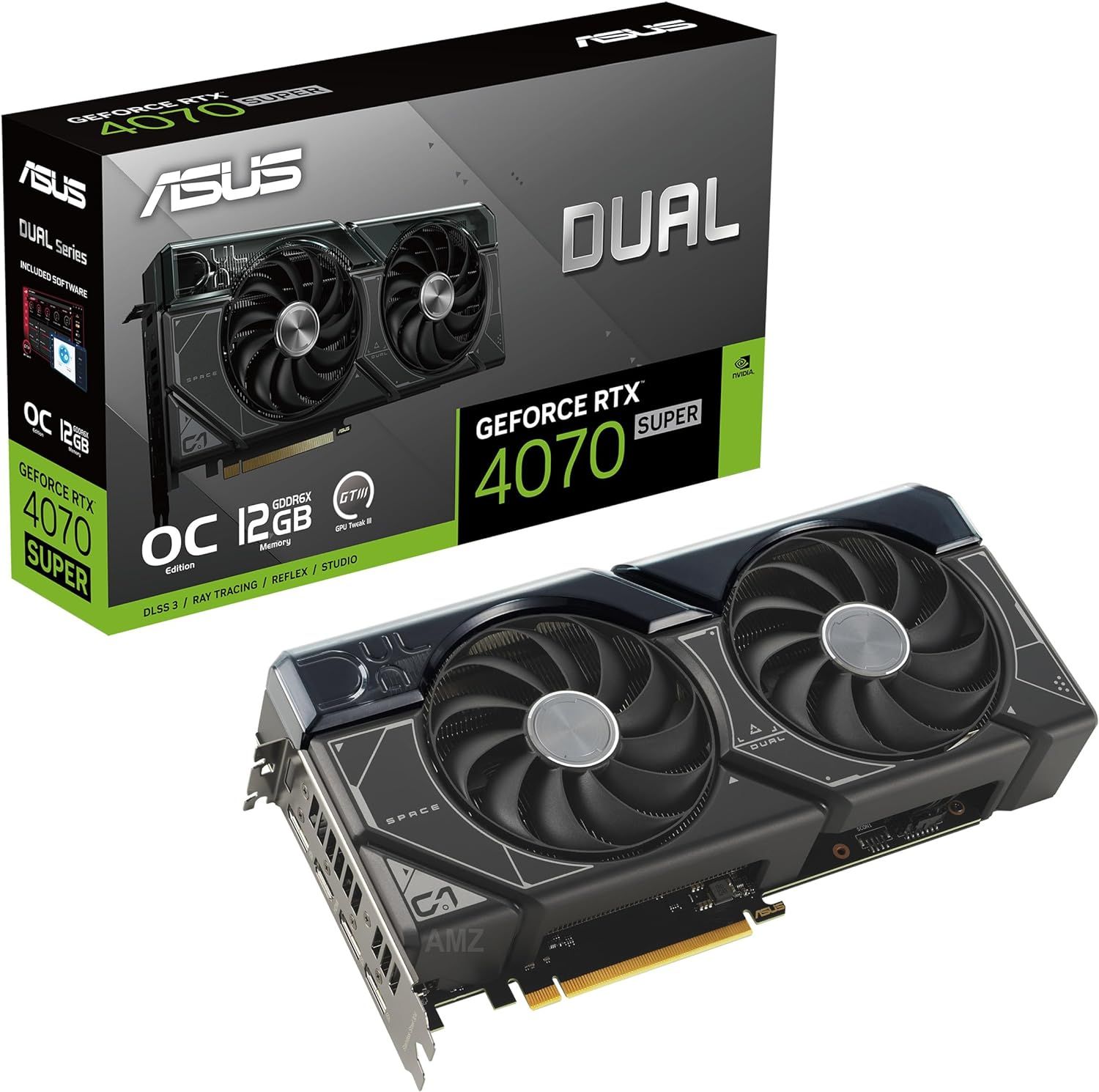
ASUS Dual RTX 4070 SUPER OC 12G
ASUS's dual-fan take on the RTX 4070 SUPER is possibly one of the most cost-effective launch units with a decent factory overclock.
The RTX 4070 SUPER itself adds 15 to 20 percent gains in terms of raw performance to Nvidia's first RTX 4000 series SUPER GPU release versus its predecessor.
The 2.56 Slot GPU offers a relatively compact take on the RTX 4070 SUPER which also sees itself featured in larger premium tri-fan SKUs even as it sees a significant performance increase versus the RTX 4060 Ti thanks to its GDDR6X memory on offer. -
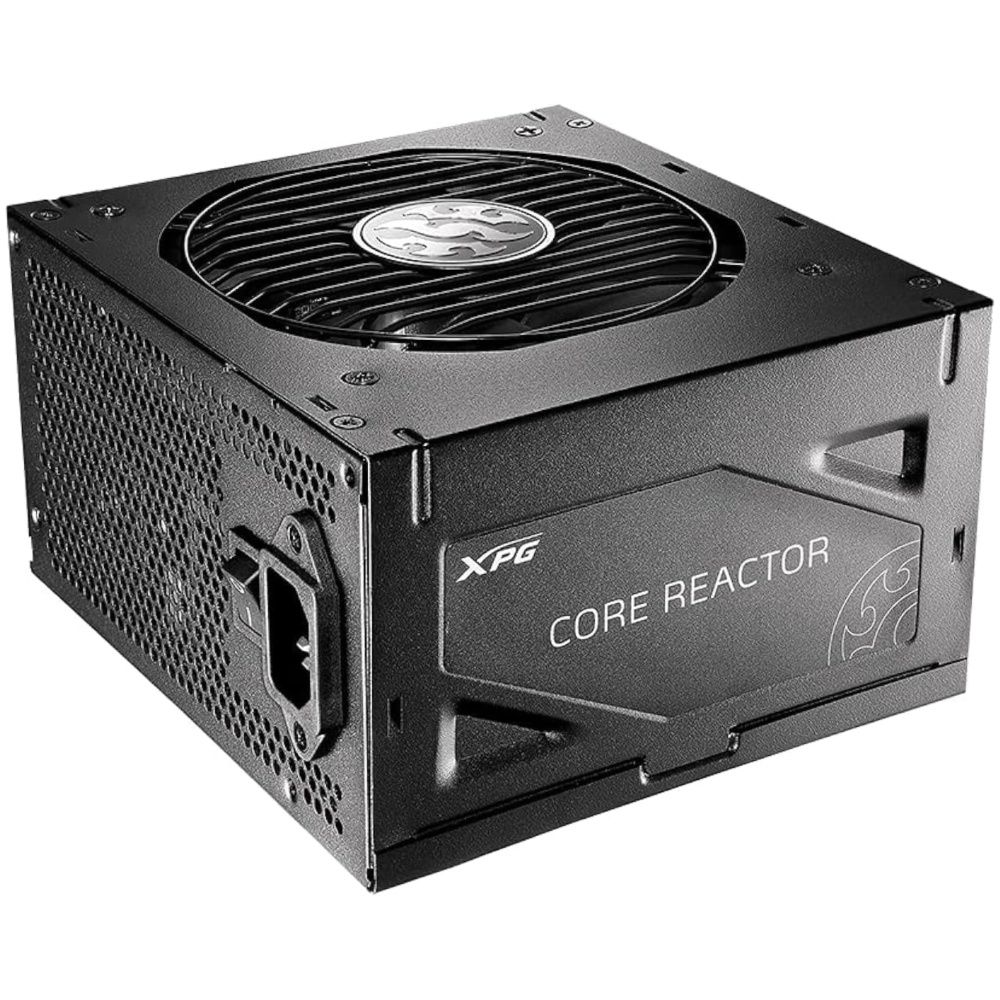
XPG Core Reactor 750W
The XPG Core Reactor 750W is an 80 Plus Gold rated ATX PSU that offers full modularity. It is an all-black PSU certified by Cybenetics for its efficiency and noise levels. It features a 120mm 2400 RPM fan with an FDB (Fluid Dynamic Bearing) design. XPG, which is a gaming sub-brand of Adata, has tuned the fan to stay at 660 RPM up till 50% load. Connectivity options on the XPG Core Reactor 750W include 1 24-pin connection, 2 ATX 12V 4+4 pin connections, 6 PCIe connections, 12 SATA connections, and 4 Molex connections.
-
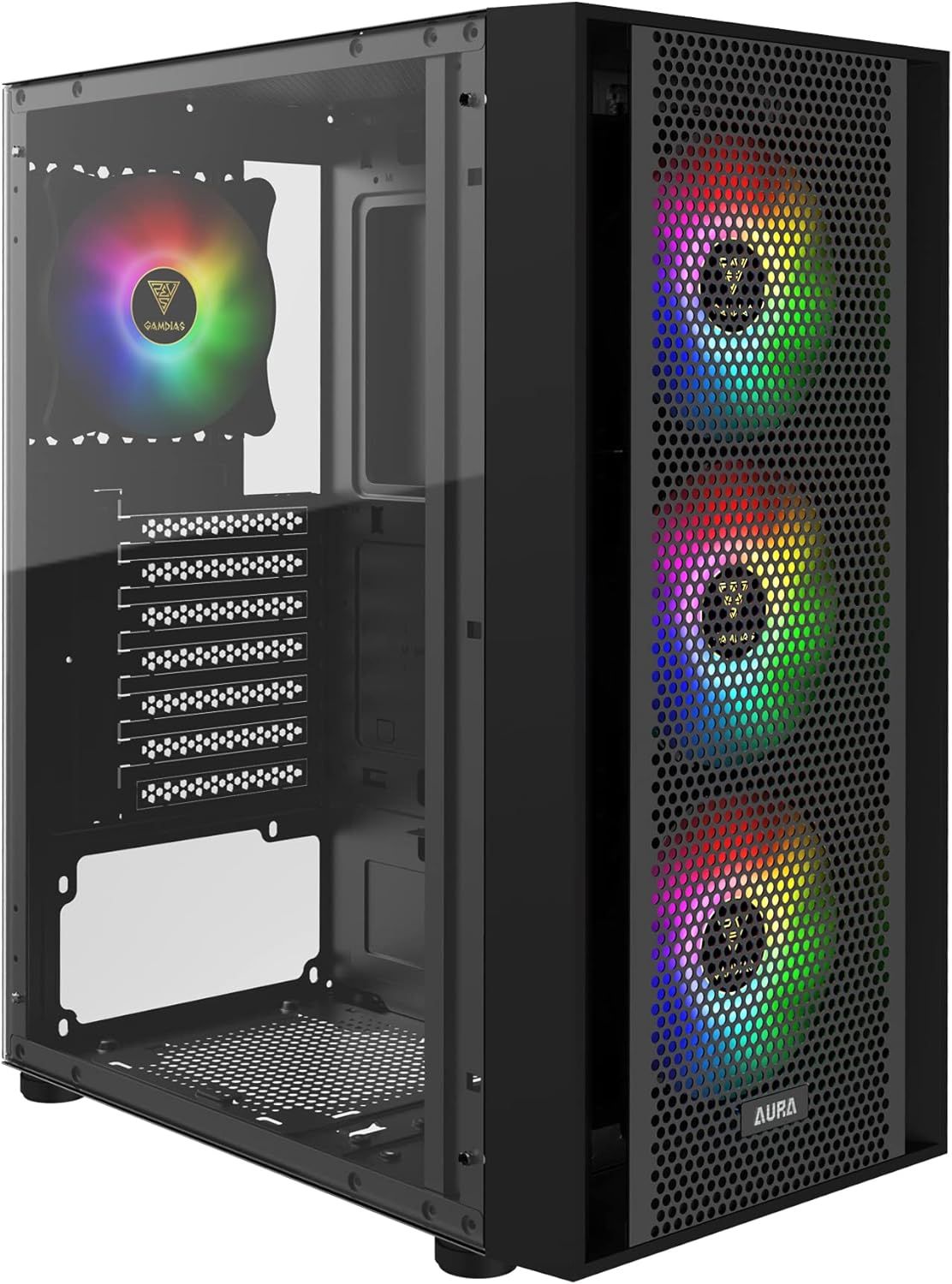
GAMDIAS ATX Mid Tower Gaming Computer PC Case
The GAMDIAS Aura GC2 is another great mid-tower ATX PC case. It comprises a tempered glass casing through which users can view all the components inside. Besides enabling users to view inside, the PC case is suitable for RGB connection with a compatible motherboard. It has four built-in 120mm ARGB fans, which help cool down the PC while working hard during gaming sessions. Also, unlike other PC cases that require tools during installation, this case is completely tool-free.
The third build opts to sneak in a powerful Nvidia GPU with an entry-level Intel CPU with a focus on gaming at a higher resolution for titles that are not as CPU-dependant as their counterparts. It does so at a cost overlay of nearly $150, but one that users can argue is fair game considering the value the RTX 4070 SUPER adds for gamers looking to play games at 2K/1440P along with the benefits of DLSS 3/3.5 on offer.
The compromises include opting for an entry-level Intel Core i3 14100F (leveraging its stock cooler to keep costs low), an entry-level (but with Wi-Fi) B760 motherboard from Gigabyte, and entry-level NVMe storage from Silicon power. Where it does not compromise, however, is equally important. It uses excellent low-latency performance-centric RAM from G.Skill, one of the best gold-rated PSUs on the market, in the shape of the XPG Core Reactor 750W while rounding it off with a mid-range Gamdias case that costs just over $50.
The high-end PSU, RAM offering, and GPU mean that users can easily push the PC above its current limitations by popping in a faster Intel CPU down the line (possibly with a 3rd party cooler). It aims to offer superior value for money by bringing that GPU upgrade to the forefront and providing a solid upgrade path for the rest of the components, taking full advantage of the modularity of a gaming PC built in 2024.
Total Estimated Build Cost: $1,162
Other Considerations When Building A Gaming PC
What Memory Capacity Should Buyers Aim For?
A gaming PC generally needs more memory than standard computers shipping with 8-16GB of memory. While most PC games recommend up to 16GB of memory, recent games like Hogwarts Legacy (at ultra settings) and other titles tend to push for 32GB of memory. While 16GB of memory will work for most users, it can't hurt to have more, especially given that memory prices are considerably lower now than in the past.
Users should ideally aim for 32GB of memory if their budget allows for it. There are currently not many use cases for 64GB of memory, even if one can afford it. However, if budget constraints apply, 16GB of memory should tide users over until games get demanding to the point of one needing more memory to meet specifications.
Should Gamers Buy A High-end Power Supply?
Most PSUs work most efficiently when running at about 50% load. With power costs rising, this is an important consideration. More importantly, higher-end PSUs have significant protection for PCs, such as OVP (Overvoltage Protection) and OCP (Overcurrent Protection), which can safeguard their components from adverse internal and external issues.
A PSU is probably a component of one's PC that is (hopefully) not going to need regular upgrades or replacements. It makes sense to get one that can handle higher-end or more demanding PC hardware down the line, allowing for easy upgrades without needing it to be swapped, while ensuring reliable power is available to one's system. Most high-end PSUs last many years with many clocking in up to a decade of service before requiring a replacement or repair.
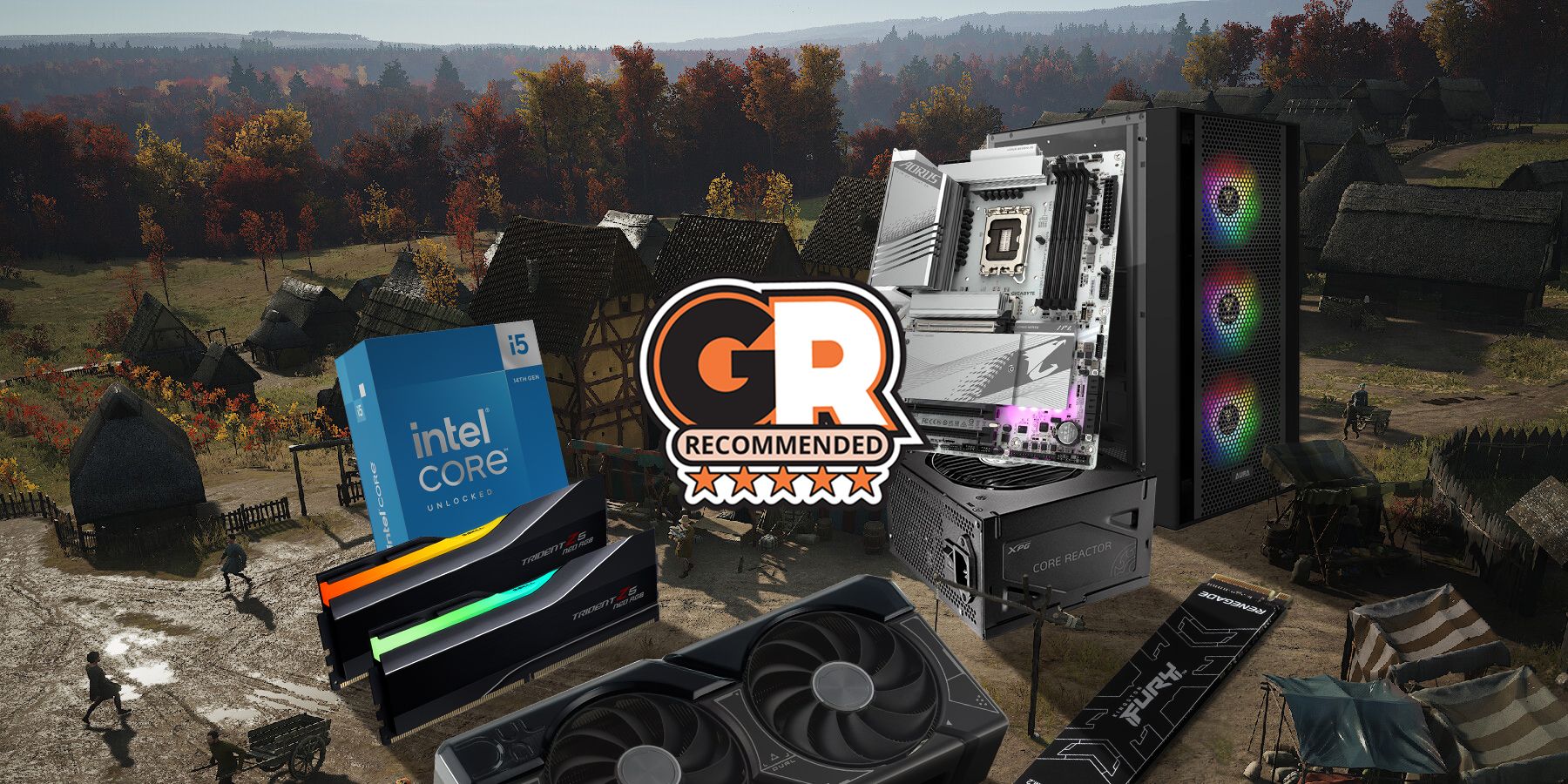
The Best Gaming PC Builds For Manor Lords
Here are some of the best gaming PCs you can build to assist your Manor Lords building spree!
FAQ
Q: Can anyone build a PC?
Yes, building a PC is not a complicated endeavor. It does however mean having to research the PC parts you need to pick up to avoid getting incompatible hardware by mistake.
Q: Can a gaming PC be upgraded over time?
Yes, users can build a gaming PC part by part on an existing PC system or simply by ordering some of the parts recommended and upgrading them one by one.

